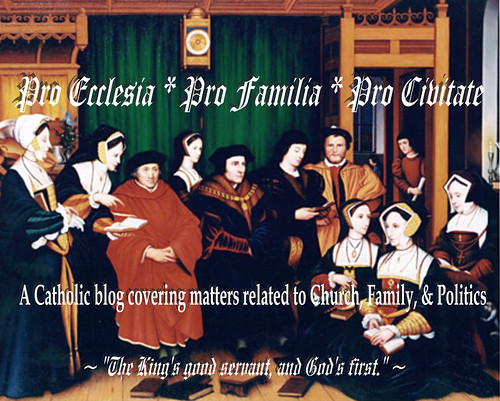Supreme Court Split Decision on Public Displays of the 10 Commandments
From Catholic World News:
Washington, DC, Jun. 27 (CWNews.com) - The US Supreme Court split two decisions today on the contentious issue of the display of the Ten Commandments on public property, allowing the display in one case, but ruling that the other is not constitutional.My Comments:
In a 5-4 ruling, the high court ruled that the display of framed copies of the Ten Commandments in two Kentucky courthouses is a violation of the separation of church and state, but then they also ruled 5-4 that the display of the Decalogue on the grounds of the Texas capital is a legitimate tribute to the legal and religious history of the US.
The two decisions were the first major ruling on the place of the Ten Commandments in public life since a 1980 decision that banned the display of the Decalogue from public school classrooms.
"Of course, the Ten Commandments are religious-- they were so viewed at their inception and so remain. The monument therefore has religious significance," Chief Justice William H. Rehnquist wrote for the majority in the Texas case. "Simply having religious content or promoting a message consistent with a religious doctrine does not run afoul of the Establishment clause," he said.
Justice John Paul Stevens, who voted in the minority, argued it was an improper government endorsement of religion. "The monument is not a work of art and does not refer to any event in the history of the state," Stevens wrote. "The message transmitted by Texas' chosen display is quite plain: This state endorses the divine code of the Judeo-Christian God."
[Full Story]
The Supreme Court's "Establishment Clause" jurisprudence in nothing short of schizophrenic. It has now become even more confusing, not to mention even more ignorant of the original meaning and intent of the 1st Amendment. I ask you, what did yesterday's split decision do for the cause of clarity when it comes to determining what is and what is not an "inappropriate endorsement" of religion?
UPDATE:
(Hat tip: Southern Appeal)
From Justice Thomas' concurrence in the Texas case:
This case would be easy if the Court were willing to abandon the inconsistent guideposts it has adopted for addressing Establishment Clause challenges, and return to the original meaning of the Clause. I have previously suggested that the Clause’s text and history "resis[t] incorporation" against the States. If the Establishment Clause does not restrain the States, then it has no application here, where only state action is at issue.
Even if the Clause is incorporated, or if the Free Exercise Clause limits the power of States to establish religions, our task would be far simpler if we returned to the original meaning of the word "establishment" than it is under the various approaches this Court now uses. The Framers understood an establishment "necessarily [to] involve actual legal coercion." "In other words, establishment at the founding involved, for example, mandatory observance or mandatory payment of taxes supporting ministers." And "government practices that have nothing to do with creating or maintaining … coercive state establishments” simply do not "implicate the possible liberty interest of being free from coercive state establishments."
There is no question that, based on the original meaning of the Establishment Clause, the Ten Commandments display at issue here is constitutional. In no sense does Texas compel petitioner Van Orden to do anything. The only injury to him is that he takes offense at seeing the monument as he passes it on his way to the Texas Supreme Court Library. He need not stop to read it or even to look at it, let alone to express support for it or adopt the Commandments as guides for his life. The mere presence of the monument along his path involves no coercion and thus does not violate the Establishment Clause.
Returning to the original meaning would do more than simplify our task. It also would avoid the pitfalls present in the Court’s current approach to such challenges. This Court’s precedent elevates the trivial to the proverbial "federal case," by making benign signs and postings subject to challenge. Yet even as it does so, the Court’s precedent attempts to avoid declaring all religious symbols and words of longstanding tradition unconstitutional, by counterfactually declaring them of little religious significance. Even when the Court’s cases recognize that such symbols have religious meaning, they adopt an unhappy compromise that fails fully to account for either the adherent’s or the nonadherent’s beliefs, and provides no principled way to choose between them. Even worse, the incoherence of the Court’s decisions in this area renders the Establishment Clause impenetrable and incapable of consistent application. All told, this Court’s jurisprudence leaves courts, governments, and believers and nonbelievers alike confused – an observation that is hardly new.
***
The unintelligibility of this Court’s precedent raises the further concern that, either in appearance or in fact, adjudication of Establishment Clause challenges turns on judicial predilections. Much, if not all, of this would be avoided if the Court would return to the views of the Framers and adopt coercion as the touchstone for our Establishment Clause inquiry. Every acknowledgment of religion would not give rise to an Establishment Clause claim. Courts would not act as theological commissions, judging the meaning of religious matters. Most important, our precedent would be capable of consistent and coherent application. While the Court correctly rejects the challenge to the Ten Commandments monument on the Texas Capitol grounds, a more fundamental rethinking of our Establishment Clause jurisprudence remains in order.
(emphasis added)



0 Comments:
Post a Comment
<< Home